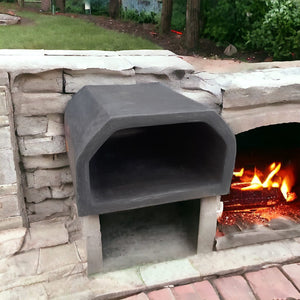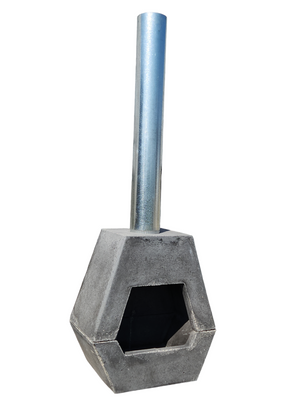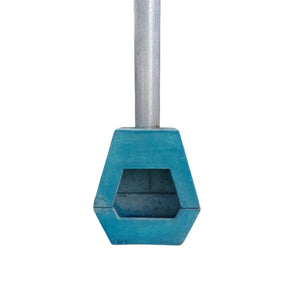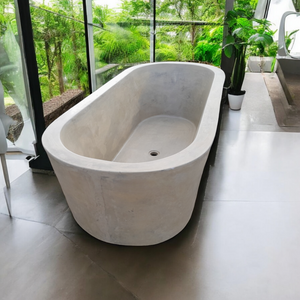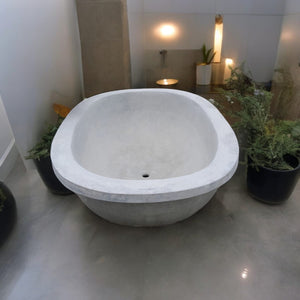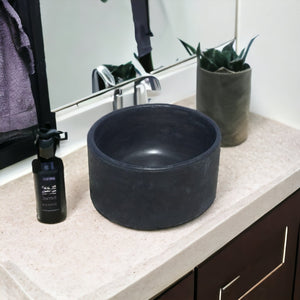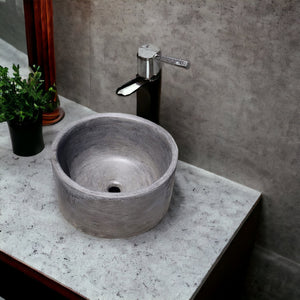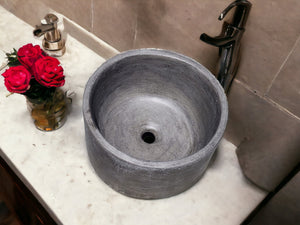On Seedballs
WHAT HOW WHY WHO WHERE WHEN
Restoration projects worldwide
"I do not want you to copy my experience. All that I know I learned by observing nature ..." - Masanobu Fukuoka
"It's 'difficult in a simple kind of way" - Jamie Nicol
This pages gathers information about making seedballs as well as in some case seed pelleting techniques.
Contents
1 On preparation technique
1.1 A note on handrolling
1.2 Masanobu Fukuoka's
1.3 Panaoitis(Panos) Manikis'
1.4 The Beej Upchaar-Sanskaar', by Deepak Suchade
1.5 The Von Bachmayr'
1.6 Milkwood permaculture farms'
1.7 SOS Organics - James K. Douglas'
1.8 Mike A. Smith's concept a treadmill converted into a seedballs mill...
1.9 David Hilston's
1.10 The Lady Bird Johnson Wildflower Center's
2 On proportions
3 On propagation
On preparation technique A note on handrolling As Jim Bones describes, “A transformation occurs within the balls as they are rolled, and after a few seconds the clay can be felt to set up or organize, as the tiny clay platelets align themselves to each other, and the seeds they enclose. It is important to roll the clay until this polymerization is felt.
” Masanobu Fukuoka's "If rice is sown in the autumn and left uncovered, the seeds are often eaten by mice and birds, or they sometimes rot on the ground, and so I enclose the rice seeds in little clay pellets before sowing. The seed is spread out on a flat pan or basket is shaken back and forth in a circular motion. Fine powdered clay is dusted over them and a thin mist of water is added from time to time. This forms a tiny pellet about a half-inch in diameter.
There is another method for making the pellets. First, the unhulled rice seed is soaked for several hours in water. The seeds are removed and mixed with moist clay by kneading with hands or feet. Then the clay is pushed through a screen of chicken wire to separate it into small clods. The clods should be left to dry for a day or two or until they can be easily rolled between the palms into pellets.
Ideally, there is one seed in each pellet. In one day it is possible to make enough pellets to seed several acres. Depending on conditions, I sometimes enclose the seeds of other grains and vegetables in pellets before sowing." Masanobu Fukuoka (1978). The One-Straw Revolution, p.99. Masanobu Fukuoka conducts a workshop for making seed balls at his natural farm and forest in Japan Watch, and watch again and learn.
The One-Straw Revolution, p.99. - Make sure to place the mesh on a rod frame, and this frame on some sort of support (bricks, etc). Test the strength of the system (mesh, frame and support)before loading the mix. The chicken wire technique, by Injun. Source Injun, who visited the Fukuoka farm drew this figure to help us understand the 'chicken wire technique' Mix the seeds and powder clay (in proportions of one to seven) Add a little water, mix thoroughly, knead

Top view of the picture # 2 Spread over a metal mesh and apply pressure from above. Use your palms to roll the balls on the mat, giving them a round shape. Place the seedballs to dry in the shade, in a well-ventilated place for 2-3 days.
Panaoitis(Panos) Manikis' The Beej Upchaar-Sanskaar', by Deepak Suchade This alternative seed pelleting method, part of the Natueco Farming Method that proposes alternative ingredients such as termitarial as binding agent, cow urine as a predator repellent and ash as a source of minerals.
1. Determine the crop variety and volume of its seed needed for the area.
2. Collect equal volume of the following a. Soil from the field you are sowing – surface 10-15 cm, 4-5 spots. This will help to identify the Ph and the nutrition available from the Soil to the life when seed going to germinate life enter in the seed and this life after analyzing asked to the microbes to provide deficiency at the root zone area.
b. Ash (a source of 100 elements). Will provide potash and help in germinating the root zone as it is attached to the seed and also provide nutrition in available form to the roots when they do not get from soil. Also help from attack of virus and insect as it work as vital force. It is known as antibiotic by organic farmers.
c. Fresh cow-dung (a source of anaerobic and microaerophilic micro-organisms)
d. Termitaria soil (a binding agent, and source of nutrients and agriculturally beneficial micro-organisms)
3. Mix all the three material and make into dough using cow-urine. Note: urine is a source of salts and also perhaps a repellent of insect-pests Present of this will help in growing of microbes, which will help in Photosynthesis.
4. Make small pellets of the whole dough, depending on the size of the seed. For pigeon pea for example, pellets of about 1cm diameter may be enough. For other way of sowing the seeds other then the research farmers can mix seed which will provide in-situ(their only) nitrogen and other nutrition like Mug, Tur (which take care of N) Safed till provide energy and nutrition as well as repellent to insect like this Chana, Kothmir (Dhania), Muster, Methi etc all this mixture will be one forth of the main seeds by volume.
5. Push one seed per pellet and shade dry them
6. Sow the pellets while following other requirements Important: to make the method workable in field conditions on large area, one would need to mechanize/semi-mechanize the pellet-making. A machine used for making tablets at a village level enterprise may be explored. If making seed pellets is cumbersome for some, a thin layer of diluted dough can be coated on to seeds. Seeds can then be air-dried and sown by machine or bullock-drawn seed-drill. Comment: Although this seed pelleting technique is not strictly a 'seedball'( seedballs are, to my understanding scattered on the ground not planted or drilled in the soil), the alternative ingredients recommended here : the termitaria soil, which reinforces my intuition, the urine, the fresh cow dung similar to the goat dung reported by Pliny the Elder in Naturalis Historia, the ash that was proscribed by Masanobu Fukuoka only when spread on fields, are very interesting. Thanks a lot, Deepak for sharing it.
The Von Bachmayr' Making seedballs for a large area by hand can be quite cumbersome. Several machines have been designed such as the Von Bachmayr drum " designed and made by Alfred von Bachmayr, of Santa Fe, New Mexico, is capable of making thousands of half inch (one centimeter) diameter seed balls per hour by nearly continuous process.
A seed, soil, clay, mix is introduced into the rolling drum, water is sprayed in, and then the seed balls are "harvested" periodically as they "grow" to the desired size. With this collapsible machine, one trained operator, under optimum conditions, can make enough seed balls for one acre in one day. Modular task drums are available for making seed balls, compost, soil mix, and building materials.
Drive options include gasoline, electric, steam, wind, water, pedal and animal power to name just a few. Desktop models made to order". (seedball.com archives)






Contact: Alfred von Bachmayr info@worldhandsproject.org All pictures below are Copyright (C) 1996 Jim Bones.
The Permaculture Research Institute of Australia Forum has a post detailing th ebuilding of an electrical rolling drum.
Milkwood permaculture farms' This bike powered rolling drum at Milkwood Permaculture Farm, in Campbell Creek, NSW, Australia, is an example of a machine to roll seedballs for large revegetation projects. SOS Organics - James K. Douglas' At SOS Organics, at Chitai, Pant Village, Almora, Uttarakhand, India.
James Seedballs stories here Mike A. Smith's concept a treadmill converted into a seedballs mill...
David Hilston's Born in 1986, David graduated from Florida State University in 2008 with a bachelors degree, majoring in International Affairs and studied Japanese. He became seriously interested in sustainable farming in college. He thought farming might not excite him as much as other pursuits so he decided to try farming in another country to spice it up. David farms in Wakayama, Japan since June 2008. He uses organic methods, works for someone else at the moment but plan to farm for himself in the future, using methods similar to Masanobu Fukuoka's natural farming.
The Lady Bird Johnson Wildflower Center's The mission of the Lady Bird Johnson Wildflower Center is to increase the sustainable use and conservation of native wildflowers, plants and landscapes. ALDHOUS, J.R. (1972): Nursery practice. Forestry Comm. Bull. No. 43, London. DALMACIO, M.V. (1976): Coating ipil-ipil (Leucaena leucocephala) seeds with Arasan-75. Sylvatrop 1, 2: 148–149. DERR, H.J. and MANN, W.F. (1971): Direct-seeding pines in the south. Agriculture Handbook No. 391, For. Service, USDA, Washington D.C. KEMP, R.H. (1975): Seed pretreatment and principles of nursery handling. In Report on FAO/DANIDA Training Course on Forest Seed Collection and Handling, Vol. II. FAO Rome. MAGINI, E. (1962): Forest seed handling, equipment and procedures: II Seed treatments, storage, testing and transport. Unasylva 16(1) 20–35. NATIONAL RESEARCH COUNCIL (1981): Sowing forests from the air. Report of an ad hoc panel of the Advisory Committee on Technology Innovations, Board on Science and Technology for International. Development, NRC. National Academy Press, Washington. ROBBINS, A.M.J. (1983 a): DANIDA Forest Seed Centre, seed leaflet No. 2, Pinus caribaea Morelet (mimeo). ROBBINS, A.M.J. (1983 b): DANIDA Forest Seed Centre, seed leaflet No. 3, Pinus oocarpa Schiede (mimeo). WAKEMAN, D.C. (1975): Colouring tree seed before sowing and for long term storage using waxoline dyes. Res. Inf. Note No. 6/75, For. Com. Res. and Dev. Division, Alice Holt, U.K.
On proportions
The adequate proportions vary with the nature of the ingredients you use. Try for yourself. But generally one 1 volume of seeds, 3 volumes of soil (if compost/worm-castings), 5 volumes of clay, water as needed will do.
This will again depend on the nature / texture of the soil you use. A remark on the size & shape a seedball I am interested in figuring out the correlation in between the seedball optimal diameter and environmental factors (humidity & precipitation patterns) In a sphere, the surface area to volume ratio is inversely proportional to the size of a sphere (size determined by its radius) The constant curvature of the sphere (the seedball) and gravity allow for all water to be directed towards the south pole of the sphere .
It happens that it is at this very pole that the seedball is most likely to be in contact with the soil. That's were the water will enter the seedball by capillary action and humidify it from the inside out. Therefore I do not think that the clay has to dissolve first, but that the strength of sprouting seed(s) will likely destructure the seedball, again "from the inside out".
In the video of M. Fukuoka in Greece, M. Fukuoka says that the ball should be 5 times the size of the seed inside of it. On propagation Hand propagation is probably the most widely used mean of propagating seedballs. But in Maara Roa, New Zealand, kids have propagated seedballs with slingshots and tennis rackets to reach inaccessible gullies covered with very thorny gorse (Ulex europaeus).
See info gained from this site and more details here https://sites.google.com/site/onseedballs/How

